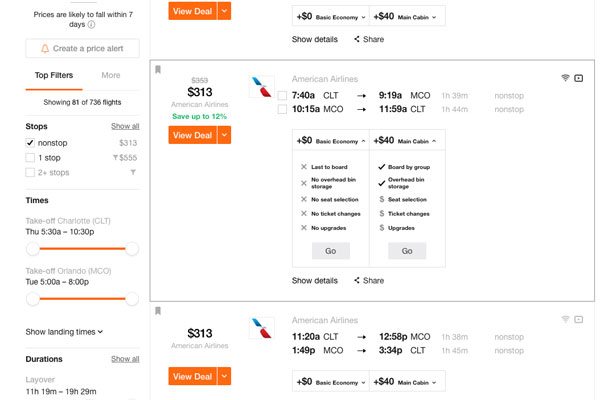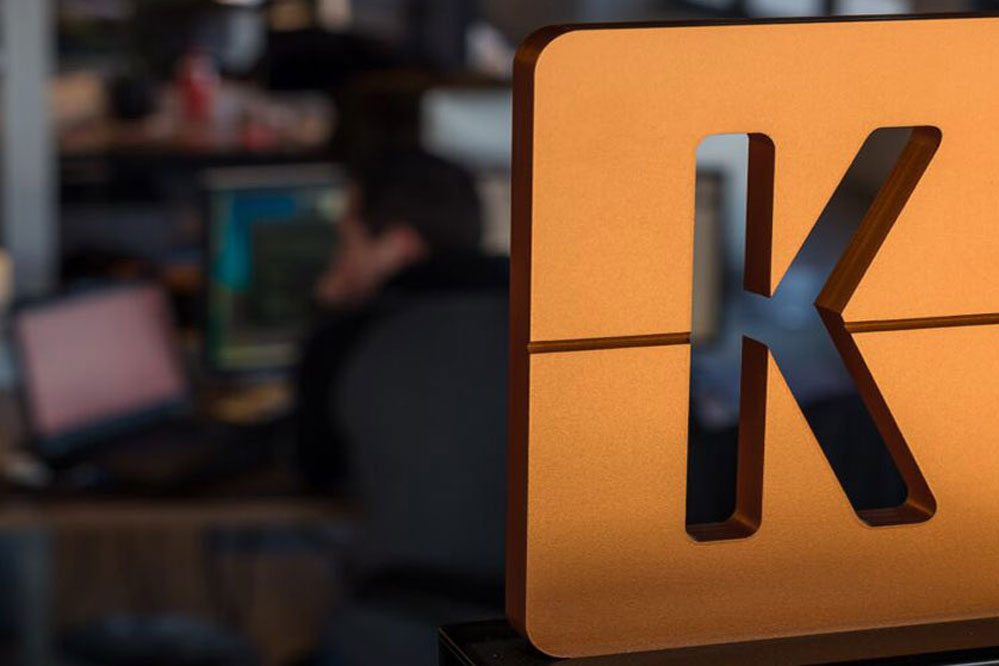Skift Take
We'll need time to see if Kayak's new drop-down boxes for comparing basic versus full-service tickets do the trick for consumers, who may still be confused, and for airlines, which may want tighter control over retailing.
When airlines created basic economy fares, they gave price-comparison companies a headache. How can you compare tickets side-by-side on price when one ticket includes, say, the right to stow a bag overhead and another doesn’t?
Kayak, the travel metasearch company owned by Priceline Group, has come up with an answer — the first of many.
Consumers searching for flights on Kayak’s flagship product, the U.S. desktop browser-based version, have begun to see the basic economy seats offered by three major U.S. airlines displayed in search results.
Last month, American Airlines copied United Airlines’s move and created a new class called basic economy (or what some critics call “economy minus”) that prevents customers from stowing a carry-on bags in overhead bins. Kayak notes that restriction in its drop-down feature comparison box.
By default in Kayak’s search results, fares are sorted by lowest price first. But if a fare is for a basic economy class seat, the search listing will include a box that explains how (for a cost of, say, $40 more) a customer can instead choose a fare that includes traditional perks. The box also highlights which amenities are available.

Keith Melnick, president of Kayak, says the next step is to bring this functionality across all flight results that are relevant, something that is still hit or miss today. Next is to bring this basic economy display to its mobile platform by June and to consumers shopping in other markets later.
Melnick says: “Suppliers really like it because we’re getting the information out, and consumers in testing have liked it as clearing up what they’re actually buying.”
The content in the drop-down box is created by Kayak and not branded by the airline. The display is driven by availability. So if there is, say, a basic economy fare but no more full-featured “main cabin” seats left, consumers will only see the basic economy option.
Delta was the first airline to introduce a basic economy product (though with a different set of included amenities). But it’s only now that metasearch and other travel companies have been working hard to figure out how to display the so-called “branded fares” in apples-to-apples comparisons.
Branded fares are not a new concept. Air Canada was arguably the first carrier to assign different perks to different fare families, with Tango class fares having the most restrictions and Flex and other fares having more perks.
But it’s something about the popularity of basic economy fares that has driven price comparison sites to tweak their listings. The goal is to more accurately and intuitively juxtapose tickets that provide different levels of service. Kayak does not yet offer a way to filter out basic economy from searches, but Hopper, a mobile-only travel agency, does, in the first of perhaps more industry experiments to come.
The Daily Newsletter
Our daily coverage of the global travel industry. Written by editors and analysts from across Skift’s brands.
Have a confidential tip for Skift? Get in touch
Tags: basic economy, kayak
Photo credit: A Kayak sign at a company office in Cambridge, Mass. The travel company spent nine months testing a way to display new airline branded fares. Kayak
